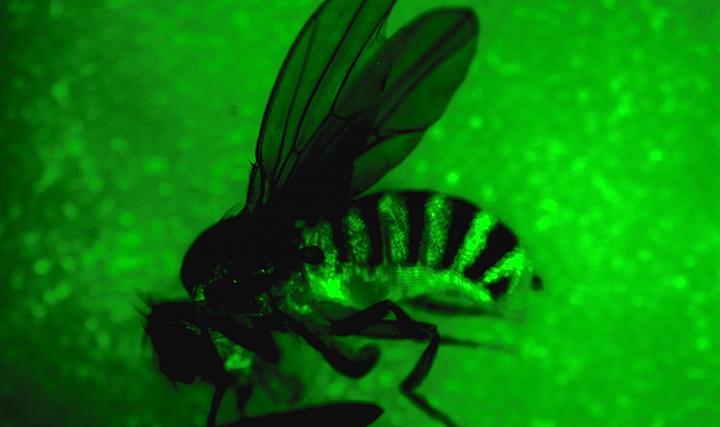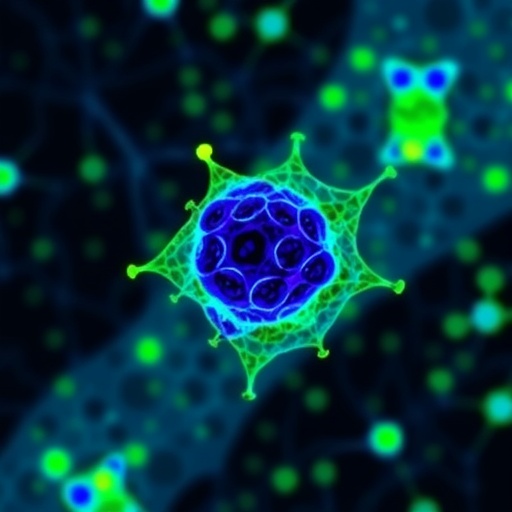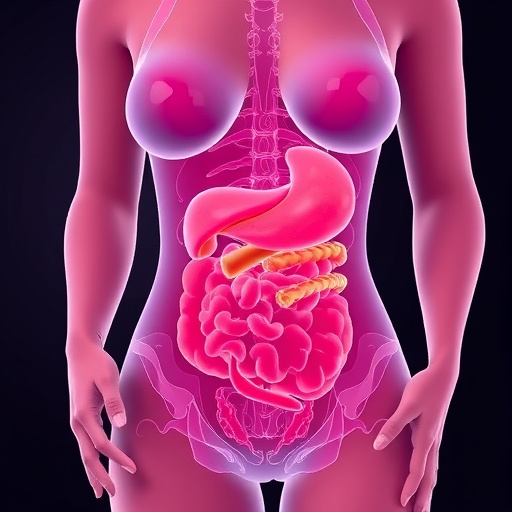
Credit: Brian Jones/Brown University
PROVIDENCE, R.I. [Brown University] — Humans and other animals carry rogue sequences of DNA in their genomes called transposable elements (TEs). To prevent passing TEs to their offspring, they employ the piRNA pathway in their reproductive organs to block the elements from being active in their sperm and eggs. With a new study in flies, Brown University biologists are the first to show that the anti-TE activity of the piRNA pathway also operates in a normal non-reproductive body tissue, the fly fat body, and that it helps to sustain the life of the animal.
"It's required for normal health and longevity," said Dr. Stephen Helfand, senior author of the study in Nature Communications and a professor of biology at Brown University.
Most previous reports of piRNA at work outside of reproductive organs were in cancer or stem cells, with one study suggesting it may also be present in a subset of adult fly neurons, but no one had ever measured its consequences in normal health and aging.
In experiments led by Brown graduate student Brian Jones, the research team tracked several components of the pathway, such as the presence of piRNAs and the expression of associated "piwi" and "flamenco" genes, in the fat body tissue of flies. The fat body is akin to adipose and liver tissues in mammals and also contributes to flies' immune systems.
Significant health effects
Once the researchers confirmed that the piRNA pathway was active in a normal, mature body tissue, they conducted several experiments to see what happened in the flies when they knocked components of the pathway out. For example, with the piwi gene gone, flies had significantly fewer piRNAs than flies who had a copy.
To see if a compromised pathway led to unchecked transcription of TEs, the researchers used a method that makes cells glow green when particular TEs move around within the genome. Flies without piwi lit up brightly.
By other measures, the researchers found that piwi-lacking flies experienced increased DNA damage compared to flies with a working piwi gene, and flies lacking in either piwi or flamenco had less fat than controls. Flies without piwi succumbed to starvation more quickly, and flies with either of the genes knocked out lived considerably shorter lives than flies with a working copy of both genes.
Specifically, about four in five flies with a working piwi gene were still alive at 60 days of age, but virtually all of the piwi-lacking flies were dead long before then. Among flies with a flamenco gene intact, about half were still alive at 60 days, while those lacking any flamenco had died off.
In one more experiment, the team tested whether a human HIV drug called 3TC or lamivudine, which blocks the step needed to make more transposable element DNA, could rescue flies without flamenco. It did to a significant extent, allowing many flies lacking flamenco to live past 60 days.
In future experiments, the Helfand lab plans to try other methods of prolonging fly lifespan, for instance by overexpressing components of the piRNA pathway.
The biology of aging
The discovery that the piRNA pathway works in a fully developed, healthy, non-reproductive body tissue and protects health and lifespan is an important finding, Helfand said, but it's not clear yet how far the discovery can take the biology of aging.
"We are just identifying that it is in this specific tissue, and we're leaving room for the possibility that it may be in other tissues in the body that are not gonadal and this may also be the case for other animals as well," Jones said. "It's possible that this pathway has roles in other somatic tissues."
It's also not clear whether the piRNA pathway has similar effects on health in mammals and, in particular, humans.
But in recent years Helfand and colleagues at Brown have published several papers using a variety of models, including human cells, that together strongly associate aging, increased TE activity, poor health and decreased longevity. The findings have led them to posit a "transposon theory of aging."
Now with a $9.6 million federal grant awarded earlier this year, Helfand's close colleague John Sedivy, professor of biology, is leading a three-year, multi-institution effort to test the theory and to determine if interventions are possible.
###
In addition to Jones and Helfand, the new study's other authors are Jason Wood, Chengyi Chang, Austin Tam, Michael Franklin and Emily Siegel.
The National Institutes of Health and a Glenn/American Federation of Aging Research Breakthroughs in Gerontology Award funded the study.
Media Contact
David Orenstein
[email protected]
401-863-1862
@brownuniversity
http://www.brown.edu/Administration/News_Bureau
############
Story Source: Materials provided by Scienmag





